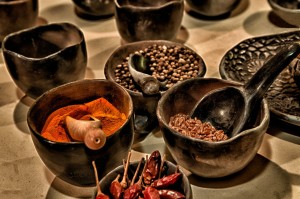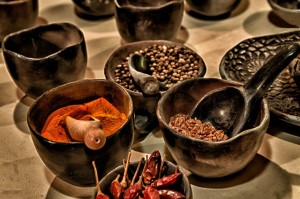 It seems there’s a new ‘superfood’ on the market every time we hit the shops. From quinoa to goji berries, nutrition scientists are excited about the dense nutrient content of certain grains, seeds and vegetables, many of which are recent additions to the average Australian diet. So, why are these foods so ‘super’? The answer has both personal and global implications.
It seems there’s a new ‘superfood’ on the market every time we hit the shops. From quinoa to goji berries, nutrition scientists are excited about the dense nutrient content of certain grains, seeds and vegetables, many of which are recent additions to the average Australian diet. So, why are these foods so ‘super’? The answer has both personal and global implications.
What makes super foods so super?
Superfoods are deemed ‘super’ because of their unusually high micronutrient content, but also because fast growing, versatile crops are crucial to feeding the world’s growing (and ageing) population. Though new to some of us, a lot of these food types have been staples in countries around the world for a long time.
African researcher Dr Beatrice Ekesa analyses the benefits of superfoods to both nutrition and global food security. Her latest publication is a comprehensive analysis of a selection of foods, including the conditions required to grow them, their nutritional properties, health-giving potential, and ways in which they can be used in everyday recipes.
Super samples
What Ekesa calls “the most valuable health foods you may never have heard of…” could be of tremendous benefit in countries where poverty or climate-based food deficits are a problem, as well as in wealthy countries where ageing and lifestyle-related nutrition concerns are apparent. Some examples of these amazing foods include:
- Amaranth – First cultivated by the Aztecs some 8000 years ago, this food is native of Peru. It can be consumed as a leafy vegetable, a cereal grain or a flour. 100g of boiled leafy amaranth contains around 4.6g protein, 380mg calcium, 4.9mg iron, 58mg magnesium, 54mg potassium, 42mcg folate, 19mg vitamin C, 0.25mg vitamin E and 228mcg of vitamin A. With high levels of calcium and carotenoids, this is a superfood for eye and bone health, particularly useful in an ageing population. Dr Ekesa offers ideas for using amaranth in a stew, sauce or porridge.
- Teff – Teff is grain native to Ethiopia. It’s a durable crop that grows well in most climates, with a nutty, chocolate-like flavour. The teff grain has a superior amino acid profile, being high in lysine, a protein essential for muscle repair. 100g of raw teff has 13g protein, 8g fibre, 180mg calcium and 8mg iron. A cup of cooked teff contains 123mg of calcium, about the same as half a cup of spinach. It is also gluten-free and rich in B vitamins, which makes it great for energy. Teff recipes include pancakes and breads.
- Fonio – Fonio grows in desert conditions across Africa. This plant matures very quickly, producing grains in just 6-8 weeks, making it a viable crop for mass production. It is gluten-free but high in fibre, and also easy to digest, making it a good nutrition source for children or the elderly. 100g of boiled whole-grain fonio has 3.7g protein, 21mg calcium, 4.1mg iron, 9mg folate, 181mg magnesium and 3.1g of fibre. In addition, fonio has essential amino acids methionine and cysteine which jointly help liver function and the detoxing process. Fonio recipes include puddings, cakes and a pilaf-style side dish.
Conclusions
Food trends come and go, but our interest in so-called superfoods is only likely to increase. Researchers across the world are aware that our over-reliance on grains like wheat flour is not necessarily ideal for our health, or for our environment. What’s more, to improve nutrition and manage food shortages in developing countries, fast-growing, nutrient-rich foods are ideal.
Dr Ekesa’s unusual recipe research is a sign of things to come, as we start to take a fresh look at the ways we grow and consume our food products in a changing world.
Reference
Ekesa, B. Selected superfoods and their derived superdiets. In Shiomi, N., and Waisundara, V. Superfood and Functional Food – The Development of Superfoods and Their Roles as Medicine (2017), February. doi: 10.5772/67239

